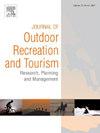卡拉君世界自然遗产地游客文化生态系统服务需求空间评价
IF 4.4
3区 管理学
Q1 HOSPITALITY, LEISURE, SPORT & TOURISM
Journal of Outdoor Recreation and Tourism-Research Planning and Management
Pub Date : 2025-10-16
DOI:10.1016/j.jort.2025.100972
引用次数: 0
摘要
世界自然遗产包含了非凡的自然现象和审美价值,在保护自然生态和满足人类需求方面具有突出的作用。然而,随着人们对远郊生态旅游需求的增加,世界自然遗产地面临着退化甚至丧失文化生态系统服务功能的风险。与此同时,学术界对其消费电子产品需求的空间量化及其与自然环境关系的识别仍不明确。保护和发展世界自然遗产的现实要求给规划带来了许多挑战。因此,本研究通过主观参与式测绘和社交媒体照片获取与游客需求偏好相关的点数据,并结合客观MaxEnt模型,在网格尺度上探索游客对卡拉扬CES需求和环境变量的空间分布格局和贡献率。此外,地理探测器工具识别了游客CSE需求的关键驱动因素以及因素之间的相互作用。研究结果表明,审美服务体验在游客中最受青睐,且分布广泛。高需求CES区域的游客主要集中在东卡拉琼的中南部和观光车沿线。此外,审美和游憩服务的空间分布格局与卡拉琼旅游区内嵌的森林、草原等地貌的垂直立体景观密切相关。高程、可达性和人类足迹显著影响旅游需求的空间分异,且与高程和可达性结合后,其余驱动因子显著增强。本文章由计算机程序翻译,如有差异,请以英文原文为准。
Spatial assessment of tourists' demand for cultural ecosystem services in the Kalajun World Natural Heritage Site, China
World Natural Heritage Sites encompass extraordinary natural phenomena and aesthetic values and play a prominent role in natural ecological protection and meeting human needs. However, the increased demand for ecotourism in the outer suburbs has caused World Natural Heritage Sites to face degradation risk or even loss of cultural ecosystem service (CES) function. Simultaneously, the academic community's spatial quantification of its CES needs and identification of its relationship with the natural environment remain unclear. Realistic requirements for protecting and developing World Natural Heritage Sites have brought many challenges to planning. Therefore, this study obtained point data related to tourist demand preferences through subjective participatory mapping and social media photos and combined them with the objective MaxEnt model to explore the spatial distribution patterns and contribution rate of tourists to the Kalajan CES demand and environmental variables at the grid scale. Furthermore, a Geodetector tool identified the key driving factors of tourists' CSE demands and the interactions between factors. The findings demonstrate that the aesthetic service experience is always the most favored and widely distributed among tourists. The tourists for high-demand CES areas are mainly concentrated in the south-central part of East Kalajun and along sightseeing vehicles. In addition, the spatial distribution patterns of aesthetics and recreational services are closely related to the vertical three-dimensional landscape of forest, grasslands, and other landforms embedded in the Kalajun tourist area. Elevation, accessibility, and Human footprint (HFP) significantly impact the spatial differentiation of tourist demand, and when combined with elevation and accessibility, the remaining driving factors are significantly enhanced.
求助全文
通过发布文献求助,成功后即可免费获取论文全文。
去求助
来源期刊

Journal of Outdoor Recreation and Tourism-Research Planning and Management
HOSPITALITY, LEISURE, SPORT & TOURISM-
CiteScore
6.70
自引率
5.30%
发文量
84
期刊介绍:
Journal of Outdoor Recreation and Tourism offers a dedicated outlet for research relevant to social sciences and natural resources. The journal publishes peer reviewed original research on all aspects of outdoor recreation planning and management, covering the entire spectrum of settings from wilderness to urban outdoor recreation opportunities. It also focuses on new products and findings in nature based tourism and park management. JORT is an interdisciplinary and transdisciplinary journal, articles may focus on any aspect of theory, method, or concept of outdoor recreation research, planning or management, and interdisciplinary work is especially welcome, and may be of a theoretical and/or a case study nature. Depending on the topic of investigation, articles may be positioned within one academic discipline, or draw from several disciplines in an integrative manner, with overarching relevance to social sciences and natural resources. JORT is international in scope and attracts scholars from all reaches of the world to facilitate the exchange of ideas. As such, the journal enhances understanding of scientific knowledge, empirical results, and practitioners'' needs. Therefore in JORT each article is accompanied by an executive summary, written by the editors or authors, highlighting the planning and management relevant aspects of the article.
 求助内容:
求助内容: 应助结果提醒方式:
应助结果提醒方式:


